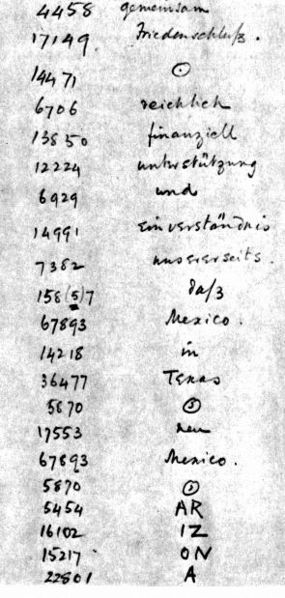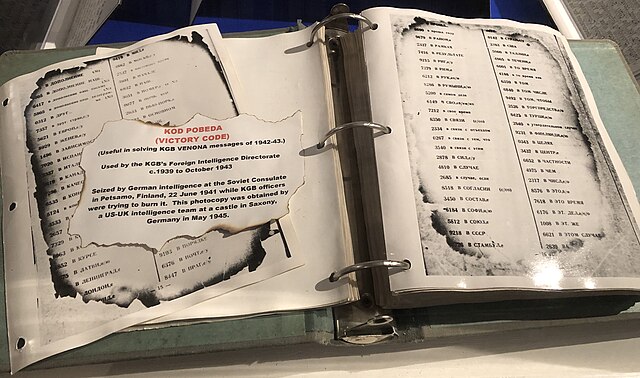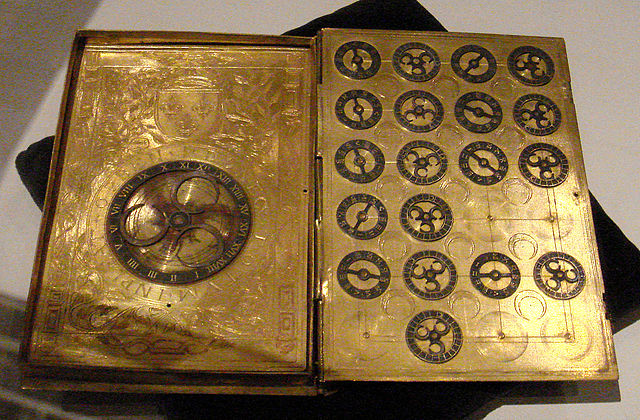In cryptology, a code is a method used to encrypt a message that operates at the level of meaning; that is, words or phrases are converted into something else. A code might transform "change" into "CVGDK" or "cocktail lounge". The U.S. National Security Agency defined a code as "A substitution cryptosystem in which the plaintext elements are primarily words, phrases, or sentences, and the code equivalents typically consist of letters or digits in otherwise meaningless combinations of identical length." A codebook is needed to encrypt, and decrypt the phrases or words.
A portion of the "Zimmermann Telegram" as decrypted by British Naval Intelligence codebreakers. The word Arizona was not in the German codebook and had therefore to be split into phonetic syllables.
Partially burnt pages from a World War II Soviet KGB two-part codebook
Cryptography, or cryptology, is the practice and study of techniques for secure communication in the presence of adversarial behavior. More generally, cryptography is about constructing and analyzing protocols that prevent third parties or the public from reading private messages. Modern cryptography exists at the intersection of the disciplines of mathematics, computer science, information security, electrical engineering, digital signal processing, physics, and others. Core concepts related to information security are also central to cryptography. Practical applications of cryptography include electronic commerce, chip-based payment cards, digital currencies, computer passwords, and military communications.
Lorenz cipher machine, used in World War II to encrypt communications of the German High Command
16th-century book-shaped French cipher machine, with arms of Henri II of France
Enciphered letter from Gabriel de Luetz d'Aramon, French Ambassador to the Ottoman Empire, after 1546, with partial decipherment
Whitfield Diffie and Martin Hellman, authors of the first published paper on public-key cryptography.






